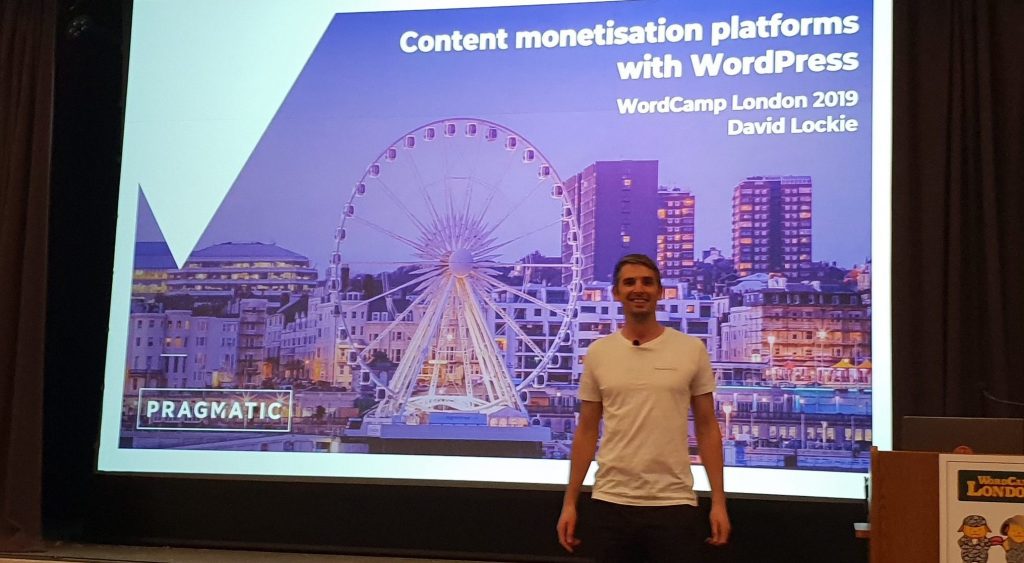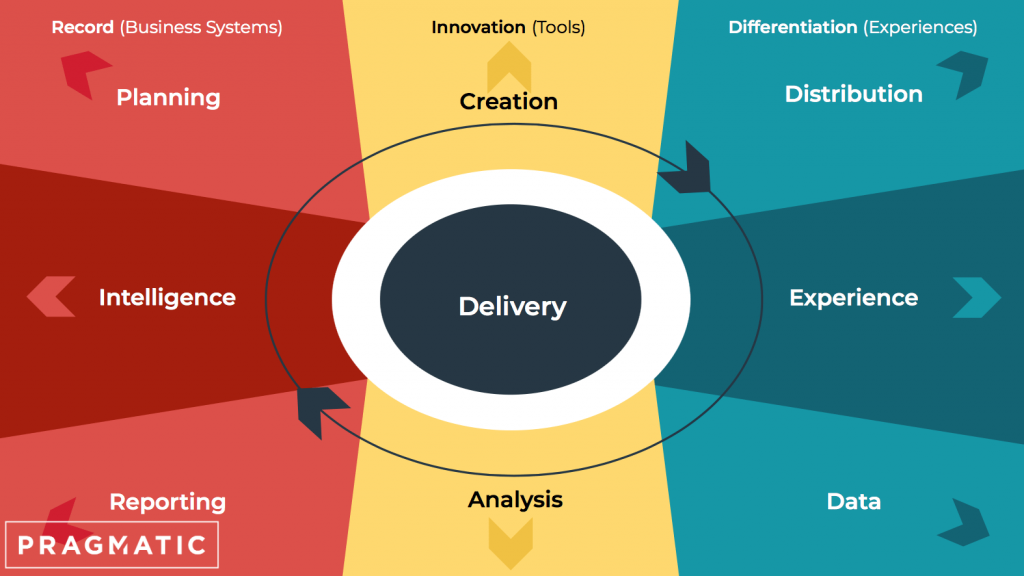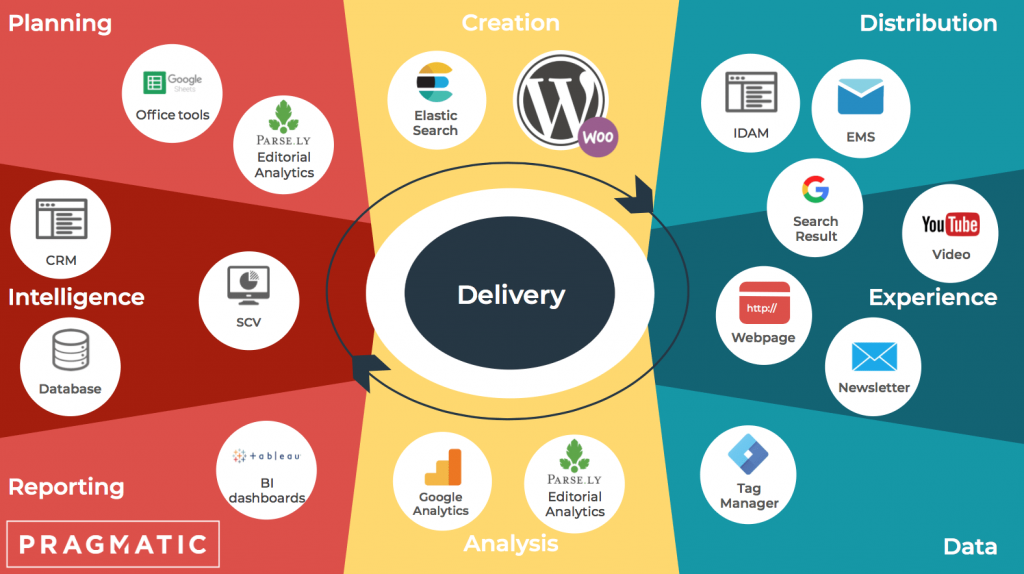We recently attended the fantastic WordCamp London. It’s always a great event to meet up with friends – old and new. Much like with every WordCamp, it gave us the opportunity to speak to the wider WordPress community, which is full of people who support each other and share experiences.
Over on Twitter, our People Operations Director, Tom Chute, shared some of his thoughts on his WordCamp London experience. He discovered that everyone is talking about applying design thinking and UX to everything! Content was also a core theme of this year, and the different approaches to UX and design content that were there were A+. Tom also did a cracking talk on ‘A master class in collaboration with education’ which you can watch here.
In today’s post, we’re looking at David’s talk on ‘Content monetisation platforms with WordPress’. For those who weren’t there or would simply like to relive the experience, here are some of the key points of the talk.
Content monetisation platforms with WordPress
First of all, let’s talk a little bit about what content monetisation is and the different ways you can use it. Content monetisation is the practice of making money using content. There are lots of different ways you can do this. But, to name a few, there’s advertising, selling your own products, brand deals, sponsoring and more – the list goes on. There are some core monetisation principles that you’re going to want to do successfully, such as getting people to your content and giving people a great experience.
Let’s discuss ads. Ads are an important way to drive traffic and make money. However, one of the biggest issues with ads is the economic incentives that drive the ad platforms. We all produce data, all the time. More than you think. In fact, everyone generates 5-600 mineable data points, constantly.

Dave’s advice: it’s better to aim to be the content, not the ad. There are better ways of monetising your content than through ads.
But, where would you even begin with you content monetisation practices?! Let’s have a look through all the different phases:
Planning
What Dave suggests will be a future planning practice is an organisation-wide, blended-intelligence media org-thinking tied to trends, news topics and real-time, granular customer data.
Creation
In the future, we can look towards AI driven content production.
Distribution
We’ll be able to see continuous, peer-to-peer, personalised distribution based on user behaviour. We’ll be able to see a shared reality.
Experiences
In the future, we can expect to see a mixed-reality experience – something that will be able to walk around with us, acting as a local guide.
Data
At the moment, platforms rely on tracking our behaviour by proxies – what we do online. Blockchain enables a world of personal data records, the paradigm is changed. Instead of being surveilled, what if we just granted access to our personal APIs – all 5-600 data points, negotiated with service providers and data platforms. Why bother trying to track my offline-online attribution journey 2nd hand if my own wearables and bots are compiling a data set that I can just give you access to?
Analysis
There will be an algorithmic model of your complete data space, ingestion of 3rd party data feeds and AI-powered real-time analysis.
Reporting
In the future, we’ll be able to see an organisation-wide, real-time reporting with machine learning-driven alerting and off-screen integration e.g. mixed reality.
Intelligence
Right now, people simply decide what they want to produce as content. In the future, who knows, maybe we’ll all be sharing some shared reality where we don’t know what’s real and what’s not. We could be looking towards a blended intelligence, where machines can augment our own intelligence to make up for our shortfalls.
After looking at all these practices, they need to be brought together and built into a model – a process that can be used to drive success.
For your clients, this model provides tangible benefits for everyone, notably a high intelligence quality and high experience quality for their clients.
For you as an agency, it’ll help you understand a client’s requirements and help look for more commercial opportunities.
But you may be wondering, “where on earth do I start”? Let’s look at two examples using WordPress. This first is relatively simple and uses WordPress and Google Analytics.
Now, this second one is how it might look for a reasonably advanced WordPress-based platform.
WordPress lies at the heart of a content monetisation platform. The reason for this being that it’s an open-source, ecosystem with thousands of integrations that allow for connectivity. But, more importantly, nobody knows what the future looks like. WordPress has proven time and time again that they’re able to move forward into an unknown space.
If you want to check out the rest of Dave’s slides and it’s amazing visuals, you can check them out here.



